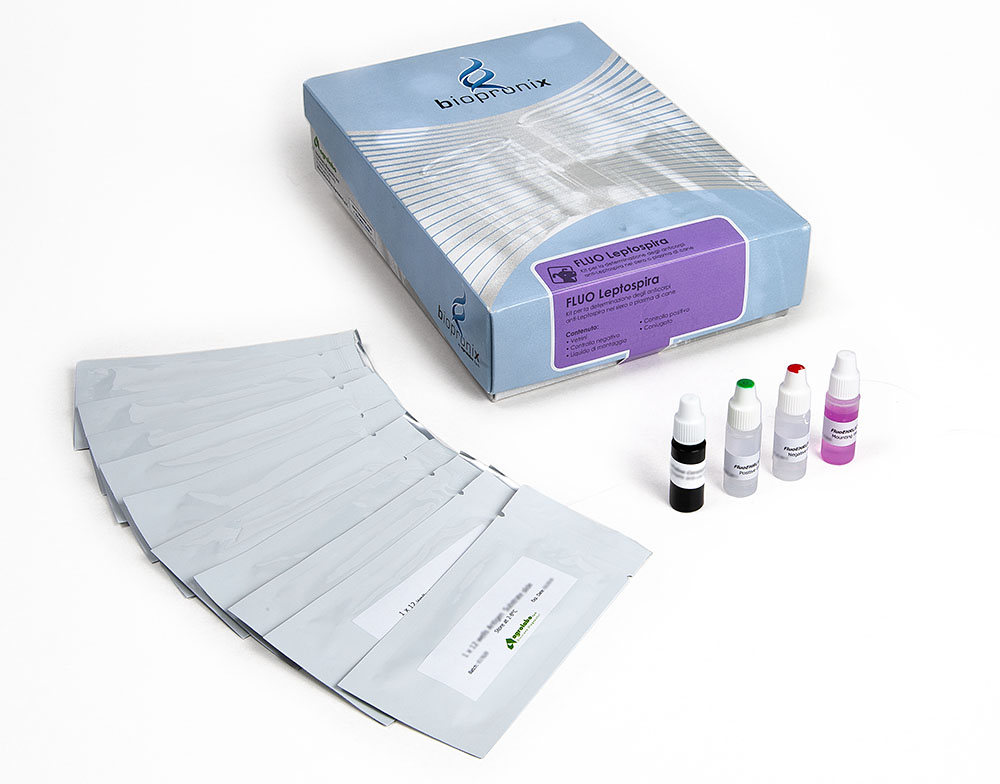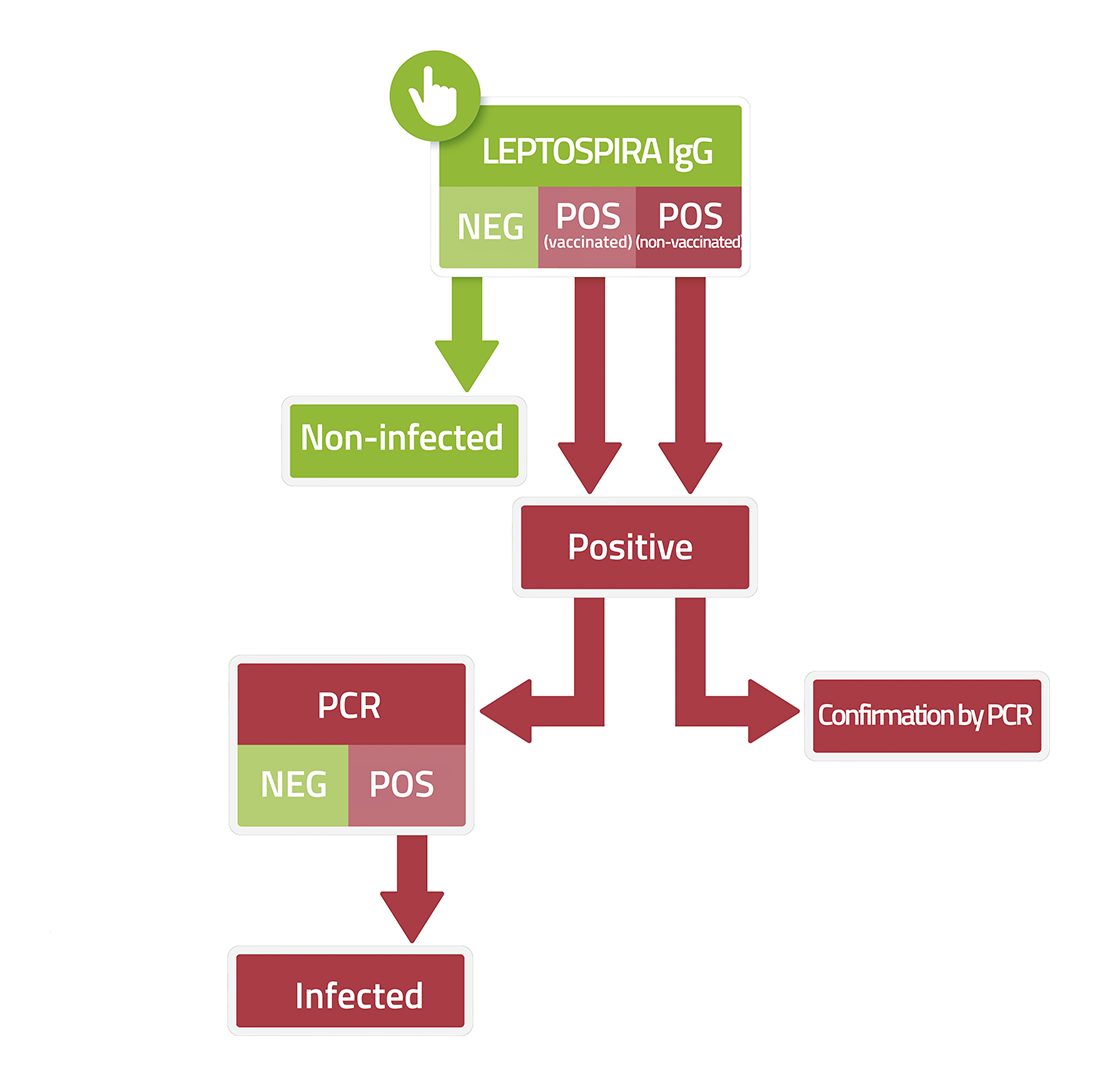FLUO LEPTOSPIRA spp.
IFA kit for the detection of IgG antibodies to Leptospira spp
Fluo LEPTOSPIRA spp. is a test based on the immunofluorescence technique for the detection of anti-Leptospira spp IgG antibodies in dog serum or plasma samples.
Leptospirosis is a serious, zoonotic disease of worldwide significance that affects many animal species. It is caused by infection with different species of Leptospira, at least 4 of these can infect the dog.
Leptospira are transmitted between hosts by direct and indirect contact. Direct transmission occurs through contact with infected urine, venereal and placental transfer, bites wounds or ingestion of infected tissues. Crowded conditions, such as may occur in a kennel, facilitate the direct spread of the infection. Recovered dogs excrete microorganisms in the urine even for months after infection. Once outside the host, Leptospira do not replicate. Indirect transmission occurs by exposing of sensitive animals to sources of contaminated water, soil, food or litter. The ideal habitat for leptospira is warm and stagnant water, while temperatures under 0 °C kill them. Disease incidence or outbreaks increase in late summer and autumn.
Leptospira penetrate the organism through the mucous membranes of the mouth, nose, eyes or abraded skin. Organism multiply rapidly after entering the blood vascular space. Then they spread and further replicate in many tissues, including kidneys, liver, spleen, central nervous system, eyes and genital tracts.
Young animals are generally more severely infected than adults and large breeds that live outdoors are more affected.
Clinical signs in dogs vary according to age, host immunity, environmental factors that affect microorganisms and the virulence of infecting serotypes.
The clinical signs are different depending on the type of infection. In case of acute infection, the following may occur:
- fever from 39.5 to 40 ° C
- chills, muscle weakness
- vomiting, rapid dehydration
- peripheral vascular collapse
- tachypnea
- coagulation defects
- jaundice
- In the terminal phase, the animals are depressed, hypothermic and liver
- and kidney damage do not have time to develop.
.
Subacute infections are characterized by:
- fever
- anorexia
- vomiting, dehydration
- polydipsia and polyuria
- reluctance to move
- paraspinal hyperesthesia caused by muscle, meningeal or renal
- inflammation,
- congested mucous membranes,
- petechial or ecchymotic haemorrhage,
- cough, dyspnoea, conjunctivitis, rhinitis, tonsillitis.

